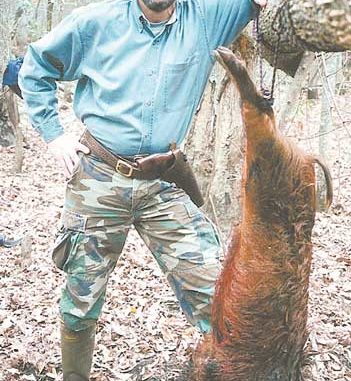
Handguns offer interesting alternatives and rewards for big-game hunters.
Dennis Hardwick and his brother planned to spend the morning scouting for hogs along the Pee Dee River in Dillon County, then hunt in the afternoon if they found promising sign.
They paddled their canoe up a small slough that branched off the main channel and checked an area, then paddled back to the river, where they spotted a large group of hogs on the opposite shore. As the hogs moved away, they paddled across the river and Hardwick stepped out of the canoe and began a stalk.
The hogs were on the move, and Hardwick sensed they were getting nervous. As he stalked, they quickened their pace, but he closed the distance, and his laser rangefinder indicated 41 yards to the closest hog. Hardwick leaned back against a tree and braced his arms across his knees in a classic shooting position.
The blast from his Smith and Wesson, Model 629, .44-magnum revolver shattered the silence. The hogs scattered in panic, but one remained behind, the victim of a 240-grain slug. The hog was a nice specimen, weighing more than a hundred pounds.
“It was one of my most memorable hunts because of the tense stalk and the 41-yard shot with an unscoped revolver,” he said.
Hardwick is one of a number of hunters who are finding out that taking big game with handguns is a rewarding experience and a great change from the usual four hours every afternoon in a treestand with a scoped rifle and padded rest.
Hardwick took two nice bucks last season with handloads from his scoped Thompson Center 7mm TCU: an 8-point, 165-pound buck and a 7-point, 140-pound buck. Both deer were killed with ammo he handloaded himself, featuring Hodgdon powder and 120-grain Hornady V-Max slugs that deliver speeds of 2,250 feet per second muzzle velocity.
Hardwick’s love of handguns began early.
“My dad taught me to shoot with a .22 caliber pistol when I was about 12 years old,” he said. “Then a friend from a large high school with ROTC in St. Louis exposed me to bull’s eye target shooting. When I went into the army, I shot the 1911, .45 ACP, and it is still one of my favorite guns.”
Hardwick is a skilled hand-gunner, having been a member of the pistol team at The Citadel his junior and senior years. A member of the Greenville Gun Club since 1976, he is on the board of directors — one of two pistol directors.
“Since taking up bow hunting and handgun hunting, every animal that I have taken has been with arrows that I made or handloads that I loaded, with the exception of three deer taken with buckshot on dog hunts,” said Hardwick, who estimates that he’s taken about 125 deer.
“I took up handgun hunting after hunting with a bow because of the similarities,” he said. It is not for the hunter unwilling to practice to become proficient with his firearm. Even at his level of skill, he recommends limiting open-sighted revolver shots at big game to 40 yards, and scoped, single-shot pistols such as the Contender to 75 yards.
Hardwick reloads most of his ammunition and stresses the importance of adhering to the manufacturer’s guidelines for reloading. He follows recommended minimum and maximum loads for firearms in good condition, and does not substitute powder. This load provides accuracy and clean kills out to 100 yards, but he prefers to limit shots to around 75 yards.
Hardwick passed up a shot last season at the biggest deer he had ever seen in the woods. It was within 20 yards, but it never gave him a clear shot that he felt comfortable in taking.
Louis Batson is another Upstate hunter who has taken hogs and deer with his Remington XP-100, bolt-action handguns. His collection of calibers ranges from the diminutive .17 Remington to the .35 Remington.
“I have revolvers and love to shoot them, but John Lewis of Carolina Precision Rifles introduced me to the XP-100, and I bought my first, a .223. I fell in love with the accuracy, and my collection began to grow.
“Handgun hunting doesn’t extend the season for me, but adds another dimension to the sport. I strive for quick, clean kills by taking shots within reasonable range.”
Batson hunts on private property, and in addition to deer and hogs, does some predator and varmint hunting.
“During the 2008 turkey season, we were on our hunting property almost every day, so we placed traps to catch feral hogs,” Batson said. “We caught 29 hogs during the month-long season in two traps. They have destroyed our food plots, and we trap as well as hunt them to control the population.”
Hog hunting is a great sport for hand-gunning. Hogs have great sense of smell and hearing, but their vision is poor. If you plan a stalk with the wind in your face and tread lightly, you have a good chance of taking a candidate for a barbeque.
Frank Allen of Greenville is a handgun enthusiast who owns Allen Arms Indoor Range. He is serious about handguns and has used them to harvest deer in Montana, finding big-bore handguns to be more than adequate for big game if used within their range limitations.
“I always knew from an early age that I would love guns, target shooting and hunting, but didn’t get serious about it until after getting out of the army at the age of 24,” said Allen, who was introduced to competitive handgun shooting and hunting by co-workers in the textile industry.
“I started with rifles and shotguns and later took up handgun hunting. I hunt with rifles for long-range hunting, but I always have a handgun handy for closer shots to take a doe or a hog. My favorite handgun for hunting is the Smith and Wesson, Model 629, .44 magnum with a magna-ported barrel.
“I have found that full-power magnum loads with extremely high velocity are not necessary to take deer and hogs. As long as heavy slugs in gun of .41 Magnum and larger are used with moderate velocity, they are adequate for these animals,” he said. “I limit my shots to 50 yards and only hunt with iron sights. One advantage of hunting with a handgun is that it frees both hands for other tasks until the moment of shooting.”
Allen’s shooting range and his personal instruction are having a big influence on local handgunners in the Upstate.
“I got into the gun-range business due to a love of guns and a desire to do something that I enjoy as well as meeting a need of the public,” he said.
Veteran handgun shooters advise hunters interested in handguns to start with a good .22 rimfire to learn the basics. The ammunition is inexpensive and the capabilities of this diminutive cartridge are surprising. Stalking squirrels and other small game with a .22 is a good tune-up for deer hunting.
A scoped .22 handgun can reach out to take small game at surprising distances. A 32-grain load with Stinger ammunition sighted to be “dead on” at 50 yards is .9 inches low at 75 yards and 3.225 inches low at 100 yards from a rifle — not bad for a small rimfire cartridge. Ballistics would be about the same for a .22 in a14-inch Thompson Center barrel, since a .22 rimfire develops most if its velocity before traveling 10 inches.
When hunting small game such as squirrels or rabbits, a .22 is sufficient. For deer-sized game, larger calibers such as .44 Magnum, or one of the rifle calibers available in single-shot pistols are appropriate.

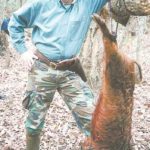
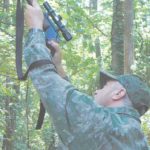

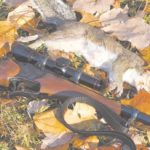
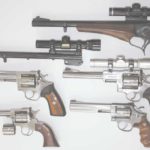
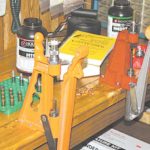


Be the first to comment